The red line of 1.8 billion acres was held, but it was the quality of the cultivated land that threatened the descendants.
Author:China News Weekly Time:2022.06.16

not
On the one hand, the black land in the Northeast becomes thinner, thinner, and hard
The acidification of the southern arable land, the saline alkaliization of the northern arable land
The area involved in cultivated land has accounted for 1/3 of the total area of the country's arable land
On the other hand, with the continuous change of land use structure
A large number of "non -grain", "non -agricultural chemical", marginalization
Even abandonment of farming, leading to actual planting food
The area of cultivated land continues to decrease
As a description of the quality of Chinese arable land, the degradation of black land in the Northeast, the acidification of the southern arable land, and the saline of the northern arable land are often mentioned together. However, from the perspective of Li Baoguo, the dean of the School of Land Science and Technology of China Agricultural University, from a professional perspective, degeneration and saline alkaliization and acidification cannot be tied. Degenerate, including becoming thinner, thinner, and hardening. It also has the problem of saline and sandy. "
Nevertheless, the "three -way" issue proposed that it is nothing more than reminding the public to pay attention to the current quality of Chinese arable land. "'Sanhua' prevention and control is an important proposition for the high -quality agricultural development in the new period, and it is also a problem that the country needs to pay attention to the quality of cultivated land." Weng Boqi, a researcher at the Fujian Academy of Agricultural Sciences, said in an interview with China News Weekly.
"Sanhua" has occupied the top 1/3 of the arable land
According to CCTV's "Focus Interview", the black land degraded in Northeast China, southern cultivated land, and saline and alkaliization in the north, the area of cultivated land involved has reached more than 660 million acres. According to the third national land survey results, the country's arable land area was calculated, and the area of cultivated land involved in the "Sanhua" has accounted for 1/3 of the national arable land area.
Among them, the acidification of cultivated land in the south is very prominent. The Weng Boqi team in Fujian has conducted soil acidification research since 2016. They carried out a series of surveys in the main production area and tea main production area, and conducted a nutrient optimization, organic fertilizer, lime, and lime for application in honey pomelo gardens. A series of acidification and improved tests such as acidification conditioning agents. Weng Boqi said that in 2010, academician Zhang Fu Suo's team of Chinese Agricultural University had published an average unit of PH from the 1980s since the 1980s. The national soil measurement formula fertilization database also found similar results. At present, China's strong acid cultivated land (PH <5.5) has reached 293 million acres, which means that nearly 1/5 of the country's arable land is facing acidification threat. There are three major acid soil distribution areas nationwide, namely the Northeast, the Jiaodong Peninsula, and the southern region. Among them, the red and yellow soil distribution area in the south has the largest area, about 200 million mu.
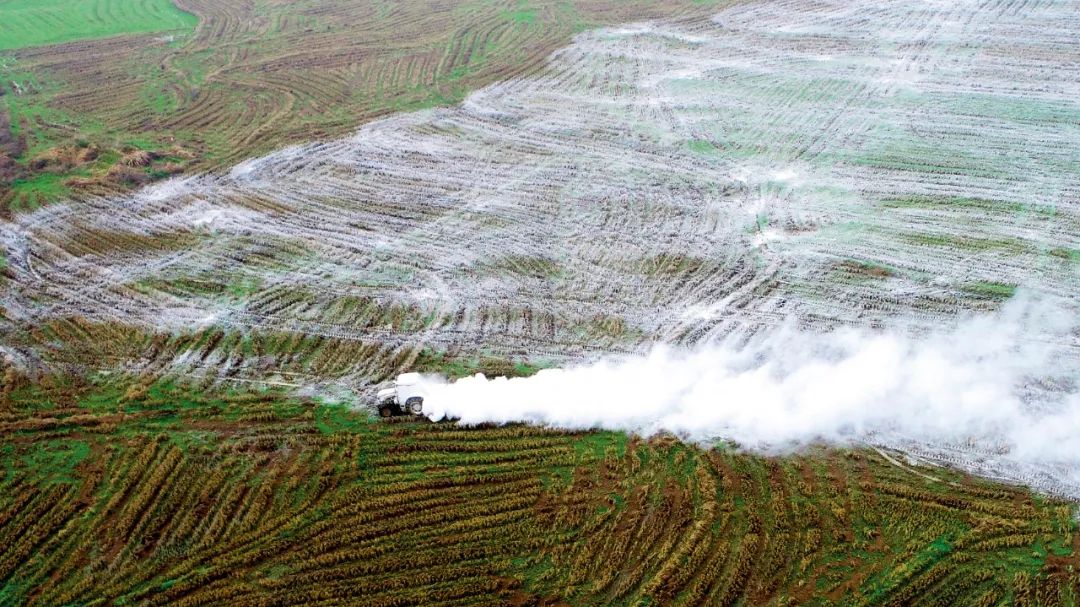
On March 5, 2021, the villagers sprayed soil conditioning agents in Yiqiao Village, Shuibian Town, Xijiang County, Ji'an City, Jiangxi to improve the level of farmland soil fertility. Photo/Visual China
For the cause of acidification, Weng Boqi's analysis mainly includes two factors: natural acidification and human acidization. From the perspective of long -term soil development, under the condition of high temperature, high humidity and heavy rainfall, soil acidification will be accelerated. Therefore, a spatial pattern of southern China is acid -based and in the north. This process has been greatly accelerated. Especially when the farmland production is continuously invested in nitrogen fertilizer, the trend of acidification has accelerated significantly. Many long -term positioning tests for 20-30 years of medium -acid soil have verified this conclusion.
Fujian Province is facing a very severe problem of soil acidification. Weng Boqi said that the National Agricultural Technology Promotion Service Center announced the basic nutrient data of the national soil measurement soil in 2014 from 2005 to 2014, which shows that the average pH value of Fujian Province in the southern provinces is the lowest, only 5.36, most of the agriculture, most of the agriculture, most of the agriculture, most of the agriculture, most of the agricultural agriculture, most of the agriculture, most of the agricultural agriculture, most of the agriculture, most of the agricultural agriculture, most of the agricultural agriculture, most of the agriculture, most of the agricultural agriculture, most of the agriculture, most of the agricultural agriculture, most of the agriculture, most of the agricultural agriculture, most of the agriculture, most of which The pH value of the ground soil is below 5.5, accounting for about 74 % of the arable land area. Fujian is a subtropical marine monsoon climate, with high temperature and rain all year round. Generally speaking, when the rainfall is greater than the evaporation, the soluble process can occur in the soil, that is, the soluble substances in the soil migrate down the soil with the water section of the soil, or the runoffs of the surface into the surface water. The H+that H+or soil contained in the rainfall is easy to react with the soil. At the same time, the acid buffer substance in the soil will also migrate with the water during the soluble process, resulting in the continuous consumption of acid buffer substances, the acid -base balance of the soil is destroyed and the acid and alkali balance of the soil are destroyed and the soil's balance is destroyed and the soil is destroyed and the acid and alkali balance of the soil will be destroyed and the soil is destroyed and the pH balance of the soil is destroyed and the acid and alkali balance of the soil are destroyed and the soil is destroyed and the acid and alkali balance of the soil will be destroyed and the soil is destroyed and the acid and alkali balance of the soil will be destroyed and the soil is destroyed and the soil is destroyed and the acid and alkali balance of the soil will be destroyed. Gradually manifested as acidic. In addition, Fujian has abundant resources and has great potential for agricultural and forestry. It is the main producing area of economic crops. In order to pursue higher economic benefits, the investment in fertilizer (fertilizer) has also increased, especially the amount of nitrogen fertilizer has increased significantly. This has also greatly accelerated the process of soil acidification.
According to Weng Boqi, in response to the problem of soil acidification, in recent years, Fujian Province has increased prevention and control and governance, guided farmers to scientifically fertilize and add organic fertilizer, and at the same time carried out scientific conditioning of acidified soil. Tests also promoted large -scale promotion measures such as lime, organic fertilizer, acidification conditioning agent, and promoting grass coverage, planting green fertilizer and other acidification measures. In recent years, the Fujian Provincial Government attaches great importance to this aspect. It has included soil acidification prevention and control and improvement and improvement. Essence
The Ministry of Agriculture and Rural Affairs also attaches great importance to the prevention and control of soil acidification. Weng Boqi introduced that taking the "Thirteenth Five -Year Plan" as an example, the Ministry of Rural Agriculture issued the "Action Plan for the Protection and Improvement of Cultivation and Improvement of Cultivation Land" The comprehensive management of acidification (submarine) arable land is the key construction project. In acidic land with a pH value of less than 5.5, a number of key counties (cities) are selected. Each county constructs more than 5,000 acres of concentrated joint demonstration areas, scientifically apply lime and soil conditioning agent, carry out straw to return to the field or plant green fertilizer , Rotate after three consecutive years. During the "Fourteenth Five -Year Plan" period, the Ministry of Science and Technology also launched the "Special of Raising Scientific and Technological Innovation of Drought Half Drought and Half Drought and Southern Red and Yellow soils in the south", arranged special funds to support the effective governance and prevention and control technology innovation of acidized farmland. In addition, special operations such as "zero fertilizer growth" and "fruit and tea organic fertilizer" have been implemented at the national level. The soil salinization problem mainly occurs in northern China. Li Baoguo has been studying soil salinization when he was studying for a PhD in 1980. He told "China News Weekly": "On the river in the north, low -lying areas are salt -alkali land. From the northeast, to the south, the Huaihe River has passed the Huaihe River. There is basically no saline -alkali land. "
Salmonization is first of all a natural phenomenon, and human activities are also an important cause of soil salinization. Studies have shown that China's soil salinization is more serious. During the agricultural production process, it will increase the productivity and increase the food output by expanding the irrigation area. During the irrigation process, due to the evaporation of water, the salt is stranded on the surface of the soil, so that the soil will make the soil Salmonization is getting worse, especially in the coastal area and arid areas, soil salinization is very prone to occur.
In the Chaidama Basin in the northern part of the Qinghai -Tibet Plateau, the staff sampled in saline -alkali land. Picture/Xinhua
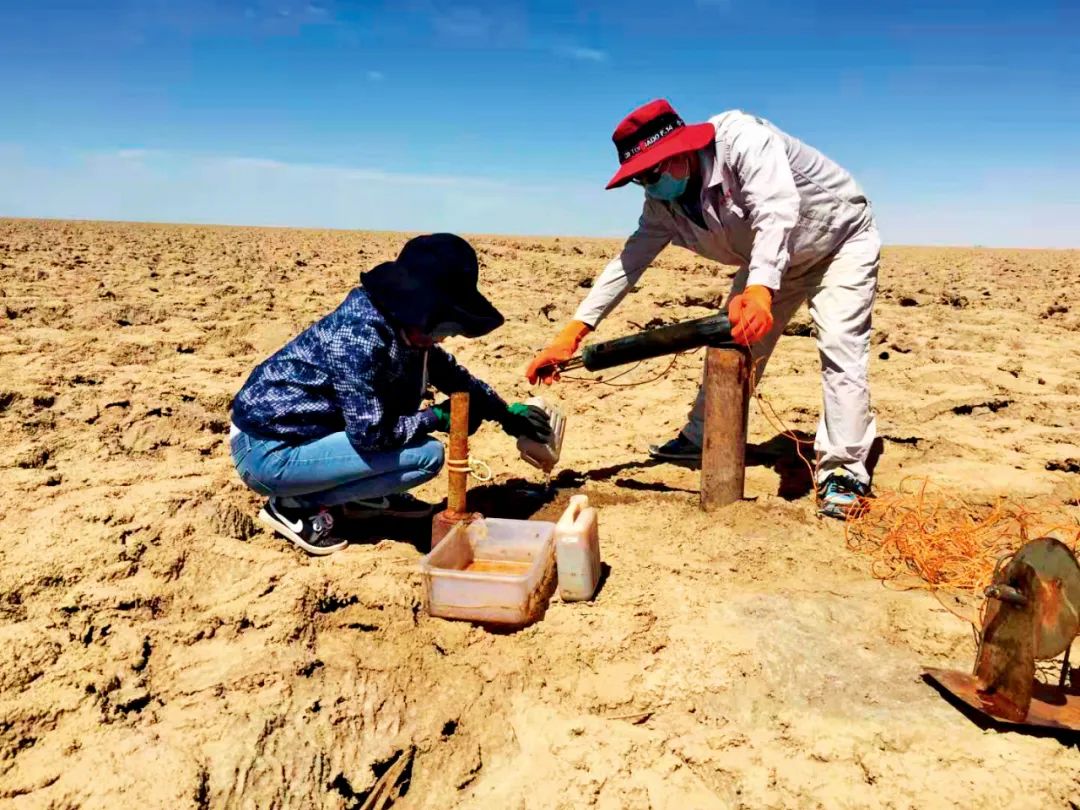
"Irrigation in the north and poor control, salt and staining may occur," Li Baoguo said. "Because irrigation water is different from precipitation, the salt content of precipitation is very low, but the salt content of irrigation water is a dozen dozen of precipitation. It is hundreds of times or even hundreds of times. It turns out that in Shandong and Henan along the yellow irrigation district, after yellowing, it will soon be salt and stains. "According to Li Baoguo, northern China, from Hebei, Tianjin, Henan, Shandong, Anhui, and northern Jiangsu. , They used to be widely distributed with salt -alkali land. Later, after large -scale governance, "those who can govern, basic governance."
China is currently increasing the reclamation of saline -alkali land. According to Li Baoguo, these saline -alkali land are mainly distributed in the Yellow River Delta, Haihe Delta, Liaoshe Delta, and the north side of the Yangtze River. Some of the Songliao Plain in the northeast. This part of the saline and alkali land is mainly soda salt soil. The sodium ion content is high and the soil is very hard. In addition, in the northwestern region of China, such as the Inner Mongolia River and Ningxia Plain, the soil saline is also very serious.
High -quality arable land decreases faster
In January 2021, an academic paper entitled "Regional Characteristics and Evolution of China's Cultivation Land in the nearly 10 years" published in the Journal of Agricultural Engineering, which has attracted the attention of the land and resources department. This article mainly analyzes the time and space changes of Chinese arable land from 2009 to 2018. "Mastering the regional characteristics and changes in the changes in China's cultivated land will help formulate differentiated regional arable land protection policies and management strategies, and provide scientific basis for ensuring food security. There are four authors of the article, namely Yuan Chengcheng, Zhang Xingxiang, Liu Liming, and Ye Jinwei.
Yuan Chengcheng, Liu Liming, etc. wrote this paper, mainly using changes in land use survey data preserved by the China Land Survey and Planning Institute. The land change survey is carried out every year. The so -called land change survey is to conduct a detailed investigation of the land change and utilization of the land in previous years, and summarize the investigation information and data to make it an effective reference for future use of land. Since 1996, the land and resources department has conducted investigations on land change. Since then, provinces and cities have reported the change of land resources in accordance with the requirements of the land and resources department every year. "This data is relatively accurate," said Liu Liming, a professor at the School of Resources and Environment of China University of Agricultural University. "The leaders of the Land and Resources Department are very interested in this article because they faintly know that there is such a law. The pre -judgment is closed. "
With the acceleration of industrialization and urbanization process, the contradiction between limited cultivated land resources and construction land and ecological land expansion has become increasingly acute, especially from 2009 to 2018, with the rapid development of socio -economic and urbanization construction, the scale of construction land scale The continuous expansion, on the one hand, the arable land is occupied by a large number of construction land. On the other hand, due to the implementation of the cultivation policy of cultivated land, large -scale land improvement, land development or reclamation projects are continuously launched to supplement the occupation of urban construction occupation occupation Number of cultivated land. At the same time, due to ecological retirement, disaster destruction and agricultural structure adjustment, China's arable land has changed significantly in terms of quantity, quality, and space distribution. Researchers such as Yuan Chengcheng, Liu Liming, and other researchers showed the laws of China's cultivated land change by analyzing the survey data of land change.
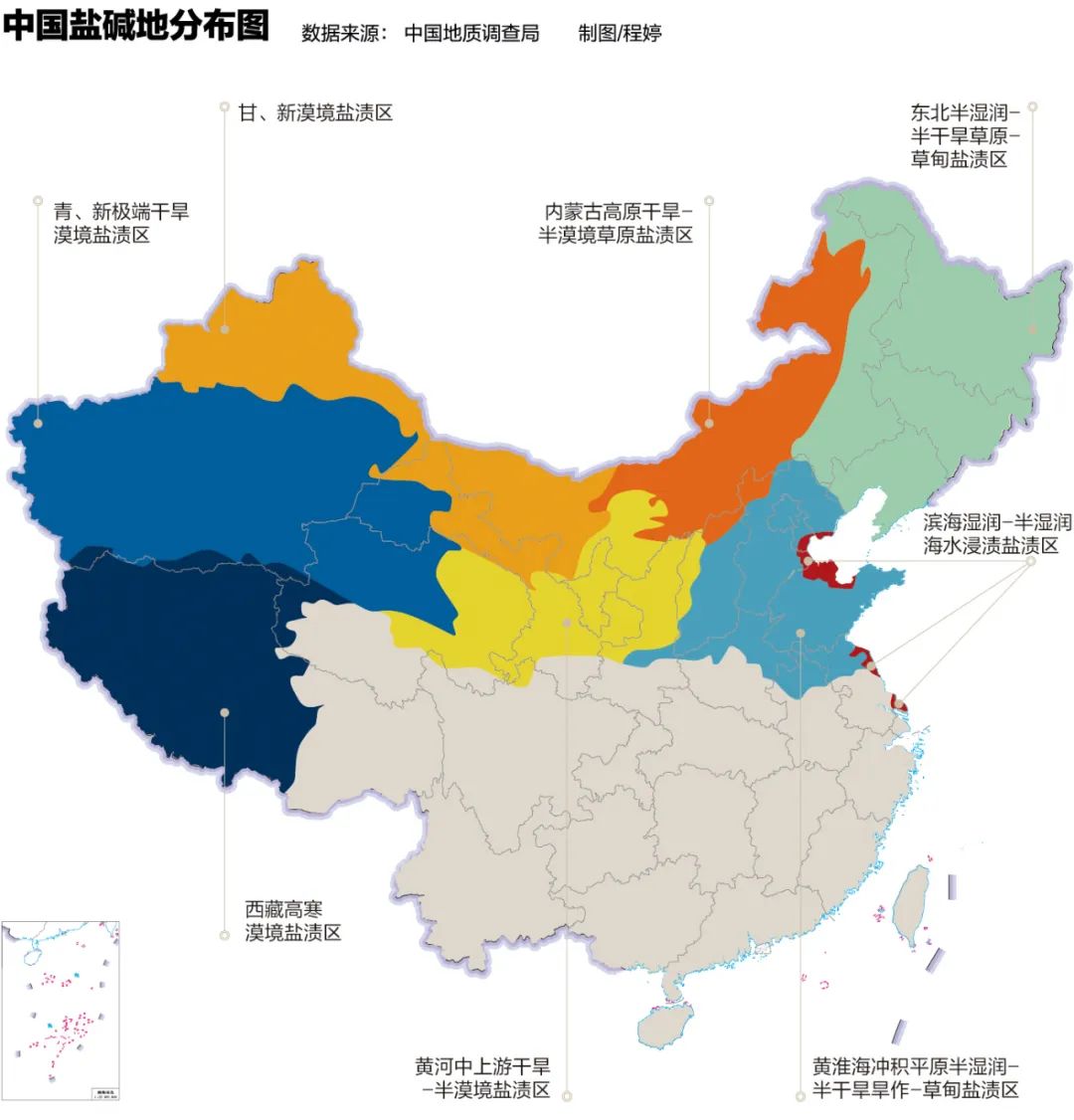
Regarding the overall situation of the country, researchers from Yuan Chengcheng, Liu Liming and others concluded that China ’s arable land area is generally stable, but regional changes are large. In 2009, China ’s arable land area was 135.3844 million HM² (hectares), accounting for about 14.10 % of the total land area. In 2018, China’ s arable land area was 134.9907 million HM², a decrease of 393,700 HM² from 2009, and a decrease of 0.29 %. From the analysis of the amplitude of the cultivated land, the area of 22 provinces (cities, districts) in 31 provinces (cities, districts) decreased, a total of 709,100 HM², which was 1.8 times that of the net decreased area of the national arable land; the remaining 9 provinces (City, district) The area of arable land is increasing, an increase of 315,400 HM². "This shows that the policy goals of the total dynamic balance of total amount are basically realized, but there are objective reality of regional differences." As a presentation of changes in the number of arable land in China, the third national land survey (hereinafter referred to as "three tones") data is on The release of August 2021 has attracted widespread concern in the society. Subsequently, the announcement of the "three tones" data of various provinces, cities, and counties that has continued to this day has repeatedly attracted public attention.
In accordance with the provisions of the Land Survey Regulations, China conducts national land surveys every 10 years. For the first time in China, China launched a national land survey (hereinafter referred to as "one tone") began in 1984. On May 16 that year, the State Council issued a notice to approve the transfer of the Ministry of Agriculture, Animal Husbandry and Fisheries, the State Planning Commission and other departments. Report on Resource Survey. The survey did not end until the end of 1997. "Two tones" ended in 2009 from July 1, 2007. On December 30, 2013, the State Council Information Office held a press conference to announce the results of the "two tones". Data show that as of December 31, 2009, China's arable land area was 2.031 billion mu, which was slightly stronger than "one -tune" data.
The third "touches" of the country's land, that is, "three tones", began in September 2018. Based on December 31, 2019 as the standard time, the "three tones" fully identified the national land use situation and established a database covering the country, province, local, and county levels. On August 26, 2021, the Ministry of Natural Resources held a press conference to announce the main data results of the "three tones". The data shows that at the end of 2019 as the standard point, the total area of China's arable land is about 1.918 billion mu, which has held the red line of 1.8 billion acres. However, compared with the "two -tone" result 10 years ago Essence
Yuan Chengcheng is a lecturer at the School of Land Science and Technology, China Agricultural University. In an interview with "China News Weekly", he introduced that "three tones" and "two tones" have shown that the total area of arable land has decreased by 113 million mu, but this involves involves In the case of survey technical specifications, before the "two tuning", considering the need to increase production and income and increase income, the policy at that time allowed the planting structure to adjust the planting structure, such as temporarily plant fruit trees on cultivated land, digging fish or forests. They all belong to the category of cultivated land. However, according to the "three tones" technical procedures, these arable land have been investigated in accordance with the current situation. For example, those who temporarily grow fruit trees on cultivated land are surveys based on gardening. Yuan Chengcheng said, "In fact, the three tones have applied higher remote sensing resolution and stricter survey technical means, which also shows that the" cultivated land "mentioned in the three -tone is more accurate in terms of quantity and connotation."
At the press conference of the main data achievements held on August 26, 2021, Wang Guanghua, deputy minister of the Ministry of Natural Resources and Director of the Office of the Third National Land Survey Leading Group of the Ministry of Natural Resources of China, has reduced the arable land in the past 10 years. The situation explained: "The main reason for the decrease in the reduction of cultivated land and land categories is the adjustment of agricultural structure and the greening of land in the case of non -agricultural construction occupying a balance." From the perspective of the situation, there are both cultivated land flowing to forest land, garden land and other land, as well as forest land, gardening, and other flowing cultivation. Among them, the net flow of cultivated land is 130 million acres of forest land, and the net flow is 63 million acres. The cultivation layer has been destroyed, and some have not been destroyed; there are more than 87 million acres of agricultural land that can be restored to cultivated land in the country, and 166 million mu can be recovered into agricultural land for cultivated land through engineering measures, but the necessary costs are required.
However, the retrieval information can be seen that in the per capita arable land area, from "one adjustment" to "three tones", it has been decreasing. Among them, "one adjustment" is 1.59 acres/person, and "two adjustments" are 1.52 acres/person. "Three adjustments" is 1.36 acres/person. If compared with the "three tones" data of 31 provinces, municipalities, and autonomous regions that have been announced one after another, it can be found that during the 10 years from "two tones" to "three tones", only a few provinces, municipalities, and autonomous regions have increased. The area of cultivated land in 20 provinces, municipalities or autonomous regions is decreasing.
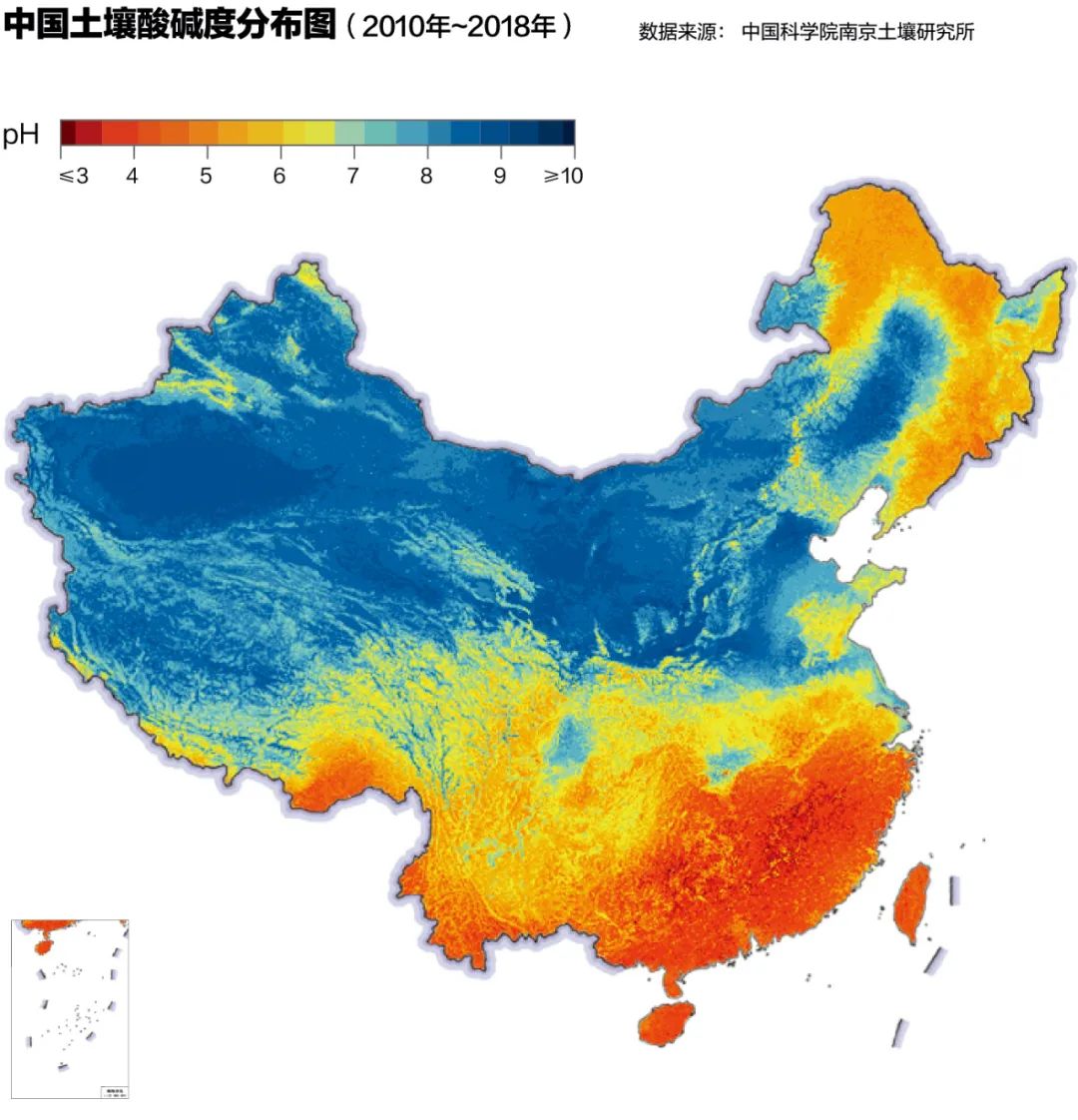
Li Baoguo, the dean of the School of Land Science and Technology of China Agricultural University, specially noticed that high -quality arable land "reduced faster". For example, he said that high -quality arable land such as Shanghai, Suzhou, and Wuxi was occupied in urban development. " It disappeared permanently. "
Construction of land stress and land use structure changes
Some agricultural experts said in an interview with "China News Weekly" that the current protection of cultivated land in my country still has pressure from multiple aspects. One of them is to carry out various infrastructure construction with the development of industrialization and urbanization. It is inevitable to continue to occupy cultivated land and even take up high -quality arable land. In the research on the data of land use changes from 2009 to 2018, Yuan Chengcheng, Liu Liming, etc. discovered such a law: Chinese arable land is mainly distributed in the area within 30km of the main cities, and new cultivated land occurs mainly in the city of departure cities. Area outside 40km. They concluded that this further shows that the development of urbanization is still the leading factors of the current reduction of cultivated land.
Researchers such as Yuan Chengcheng, Liu Liming and other researchers found that from the analysis of the changes in cultivated land, from 2009 to 2018, Beijing, Tianjin, Shanghai, Chongqing, Guangdong, Xinjiang and other places such as the annual average arable land change dynamic attitude. 0.6294 %, "This shows that the change in cultivated land in Beijing is relatively severe." Among these six provinces (cities, districts), Beijing, Tianjin, and Chongqing cultivated land have decreased significantly, while the changes in the changes in the cultivation of farmland in Shanghai, Guangdong and Xinjiang have increased significantly. Prior to 2010, the Pearl River Delta and the Yangtze River Delta were considered to be the most severe land loss in China, but in the past 10 years, the central region has become the area where China's cultivated land is most serious, while Guangdong and Shanghai have not only decreased. Instead, it has increased significantly.
Yuan Chengcheng, Liu Liming, etc. have also found that the number of arable land in China's city in the past 10 years has changed, and the "East-Middle-West" spatial difference with the "Harbin-Zhengzhou-Kunming" belt has appeared. The area of the centers with internal arable land is basically the same as that of the total amount of arable land in China, and the net decrease in the amount of arable land in the east area of the center is similar to the net increase in the cultivated land west in the center belt. It can be seen that on the one hand, due to the rapid development of urbanization and socio -economic development, the trend of reduced cultivated land is still difficult to curb. On the other hand, the east region is limited by land resource endowments, and the potential for new cultivated land is insufficient; and the majority of China west China The region is the main source of new arable land, which is consistent with the phenomenon of "North Grain South Transport" in recent years.
From the analysis of the hot spot area in China, researchers such as Yuan Chengcheng and Liu Liming found that the Beijing -Tianjin -Hebei region in the Huanghuaihai Plain, the Yangtze River Delta region in the middle and lower reaches of the Yangtze River, and the Chengdu -Chongqing urban agglomeration in the Sichuan Basin are the key areas of the loss of cultivated land; from the new Analysis of the hotspot area of increased cultivated land, the Huaihai Basin north of the middle and lower reaches of the Yangtze River, as well as the area such as Inner Mongolia and Xinjiang, is a key area for new cultivated land.
The other aspect of the protection of cultivated land is due to the finer and scattered operation of the current cultivation of cultivated land, and the economic benefits of farmers' cultivated land planting are low. "Agricultural chemical", marginalization and even abandonment of farming.
Li Renqing, Secretary of the Secretary of the Rural Social Issue Research Center of the Chinese Academy of Social Sciences, also said in an interview with "China News Weekly": "With the development of national modernization, industrialization, and urbanization, land use is also in the process of continuously changing process Among them, the structure of land use is increasingly inclined to non -agriculturalization. Because the agricultural income is relatively low now, farmers do not make money, and the phenomenon of abandoning and inefficient cultivation has appeared. "
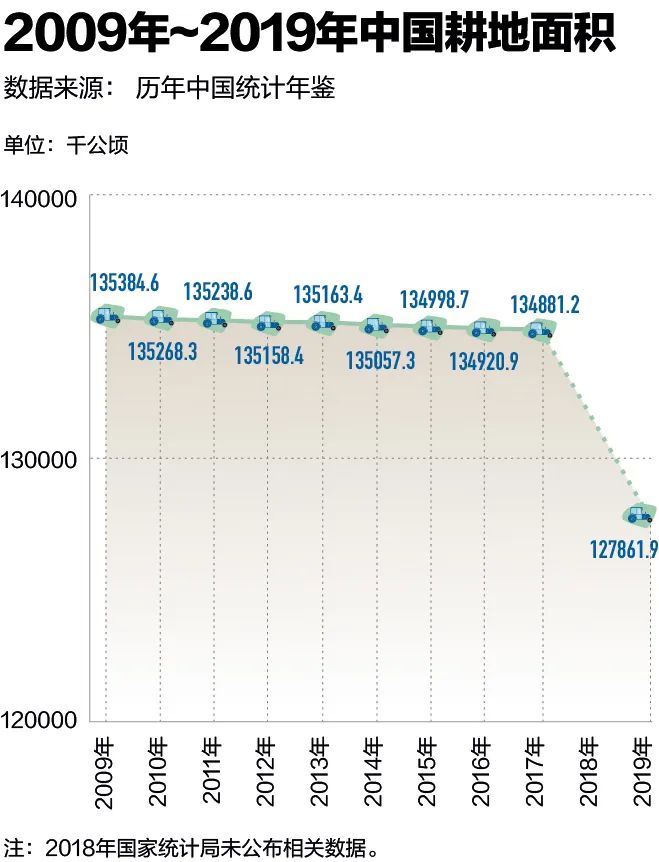
Wei Houkai, director of the Rural Development Research Institute of the Chinese Academy of Social Sciences, calculated the comparison index of comprehensive income comparative income of various crops between 2016 and 2020. He found that if the comprehensive income of the grain planting is 1, he calculated that the tomatoes, the tomato, the tomato, and he calculated The comprehensive revenue comparative index of 7 kinds of vegetables including cucumber, eggplant, cabbage, pepper, Chinese cabbage, and potato is 39.2, while Apple's comprehensive income index is 26.85. This gap has led to the low enthusiasm of farmers to grow grain.
Li Renqing believes that in the face of changes in the structure of land use, we must consider the protection of cultivated land and food safety from the perspective of farmers, to protect the interests of farmers, such as how to reduce labor, increase farmers 'income, consider grain planting and farmers' income Is it necessary to link between?
As for the phenomenon of farmland flowing to forest land and gardens and crowded cultivated land resources, agricultural experts said that on the one hand, farmers considering from the perspective of efficiency, they will subconsciously choose to plant grains. Building land, this is a process of "emptying" arable land quietly in forest land and garden land, which should attract special attention.
To do a good job in the articles in the cultivation of the cultivated land
"In addition to the reduction of cultivated land, our food safety and the biggest threat to food safety now are that large -scale arable land is excessively used, and the organic matter and pH balance of cultivated land are destroyed," Li Renqing told China News Weekly. Excessive use of chemical fertilizer and soil pollution and environmental pollution, many cultivated land are no longer suitable for cultivation, which threatens the sustainable use of our descendants for cultivated land. The problem is very serious, but now it is not enough attention to it. "
Cultivated land is the lifeblood of grain production, and the importance of cultivated land for food safety is undoubted. According to Weng Boqi, a researcher at the Fujian Academy of Agricultural Sciences, although subversive technologies such as plant factories and artificial synthetic starch have emerged, it may give people an illusion that the importance of future arable land is gradually decreasing. Small area tests are mainly based on the effectiveness of practical application. In the short term, it is still impossible to replace the agricultural production method currently dominated by field agricultural production. That is to say, the protection and utilization of cultivated land resources is a crucial link to ensure food safety. "To ensure food safety and food safety, we must not only protect the number of arable land, but also protect the quality of cultivated land." Weng Boqi said. With the development of industrialization and urbanization, the construction of various facilities inevitably occupy a cultivated land. Photo/Visual China
According to Weng Boqi, from the current point of view, the quality of cultivated land in China can effectively ensure the safety of national food. Although Chinese soybeans and other crops have been imported in recent years, and the import volume exceeds 100 million tons, the self -sufficiency rate of rations still guarantees more than 95 %. Use industrial raw materials. In addition, China's major grain production currently only achieves about 60 % of production potential, and production capacity still has greater excavation potential. Therefore, overall, the number of arable land in China can effectively meet the needs of food safety. However, the quality of cultivated land still needs to be improved, especially at present 70 % of the low and medium -production fields need to be effectively transformed. Only by continuously conservation of the soil and improving the soil fertility can we realize the hiding food.
In Liu Liming's opinion, from the perspective of the protection of Chinese arable land, "it is successful, at least keeping the red line, but there are still many problems in the quality of cultivated land." Liu Liming believes that the key is to make the articles in the red line well. What we need to do is how to increase the capacity of cultivated land in the red line. "And improving production capacity depends on multiple factors, such as increasing investment in agriculture, but the most basic conditions are the quality conditions of the cultivated land itself. It is necessary to "guarantee a certain planting area."
Li Renqing also said that for the protection of food safety, the cultivated land can only be one of the elements. How much land is in use, what is the production and the quality, these are closely related to food safety.
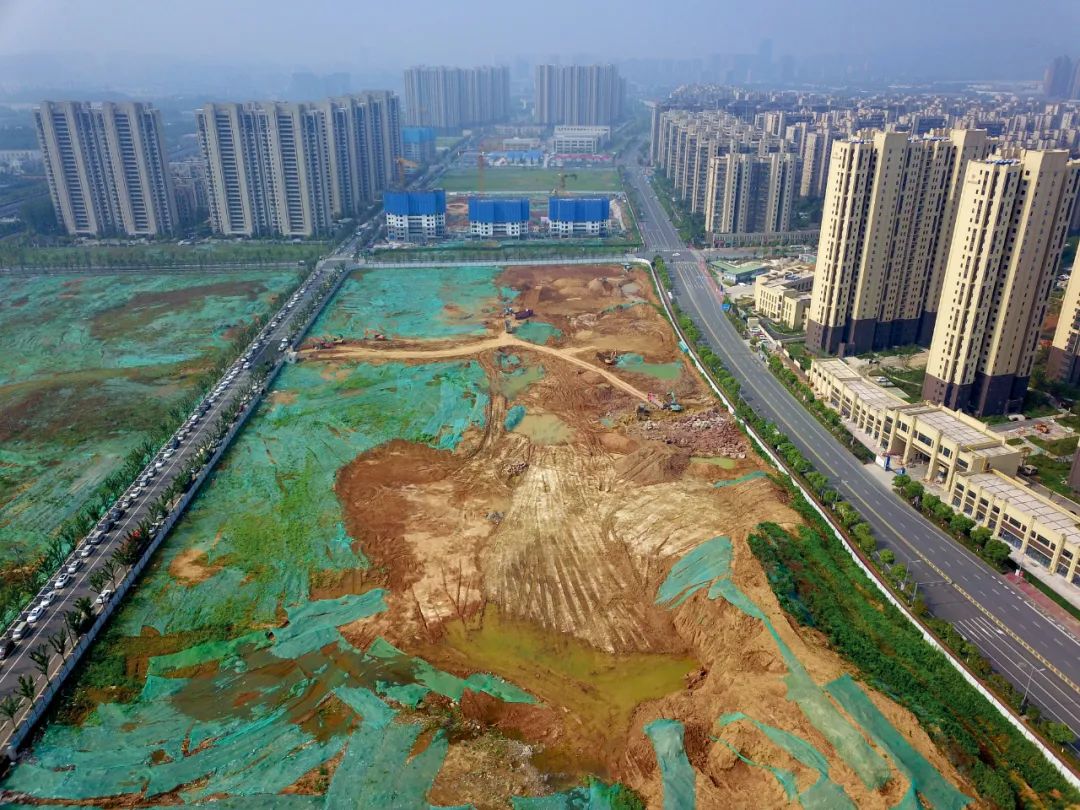
For how to better protect and use cultivated land, Weng Boqi believes that on the one hand, we should always adhere to the red line of cultivated land, strengthen the management of the number of cultivated land occupation and quality balance management, and on the other hand While ensuring high agricultural high productivity, the quality of cultivated land is not degraded, the combination of land and land is strengthened, the combination of planting and breeding is strengthened, the use of straw circulation is strengthened, the protection of law is protected in accordance with the law, and the quality of the arable land is improved.
Since the implementation of the family coalition contract responsibility system, the decision -making power of the arable land is in the hands of farmers. Whether it is the use of cultivated land or protection, the main body is farmers. In order to better protect the cultivated land, Weng Boqi believes that it is necessary to reward the farmers of the planting land and give the farmers who have raised land. He suggested that the organic matter content of the soil is determined every 5 years as the benchmark, and the reward standard is determined. It is necessary to allow farmers who contract farmers to consciously protect the cultivated land, maintain soil land, and then promote the in place of the quality conservation technology of cultivated land, and provide a solid foundation for rural industry revitalization and agricultural green development.
Send 2022.6.20 Total Issue 1048 "China News Weekly"
Magazine title: not only protect the number of arable land, but also protect the quality of cultivated land
Reporter: Liu Xiangnan ([email protected])
Edit: Liu Xiangnan
- END -
The Meteorological Observatory of Eshan Yi Autonomous County issued a heavy rain blue warning [Class
At 16:58 on June 8, 2022, the Meteorological Observatory of Miushan County issued a heavy rain blue warning signal: In the past 12 hours, the rainwide vehicle field station in our county reached 55.2
Jinan University Student Entrepreneurship Incubation Center signed the 20th batch of enterprises (projects) to settle in agreement
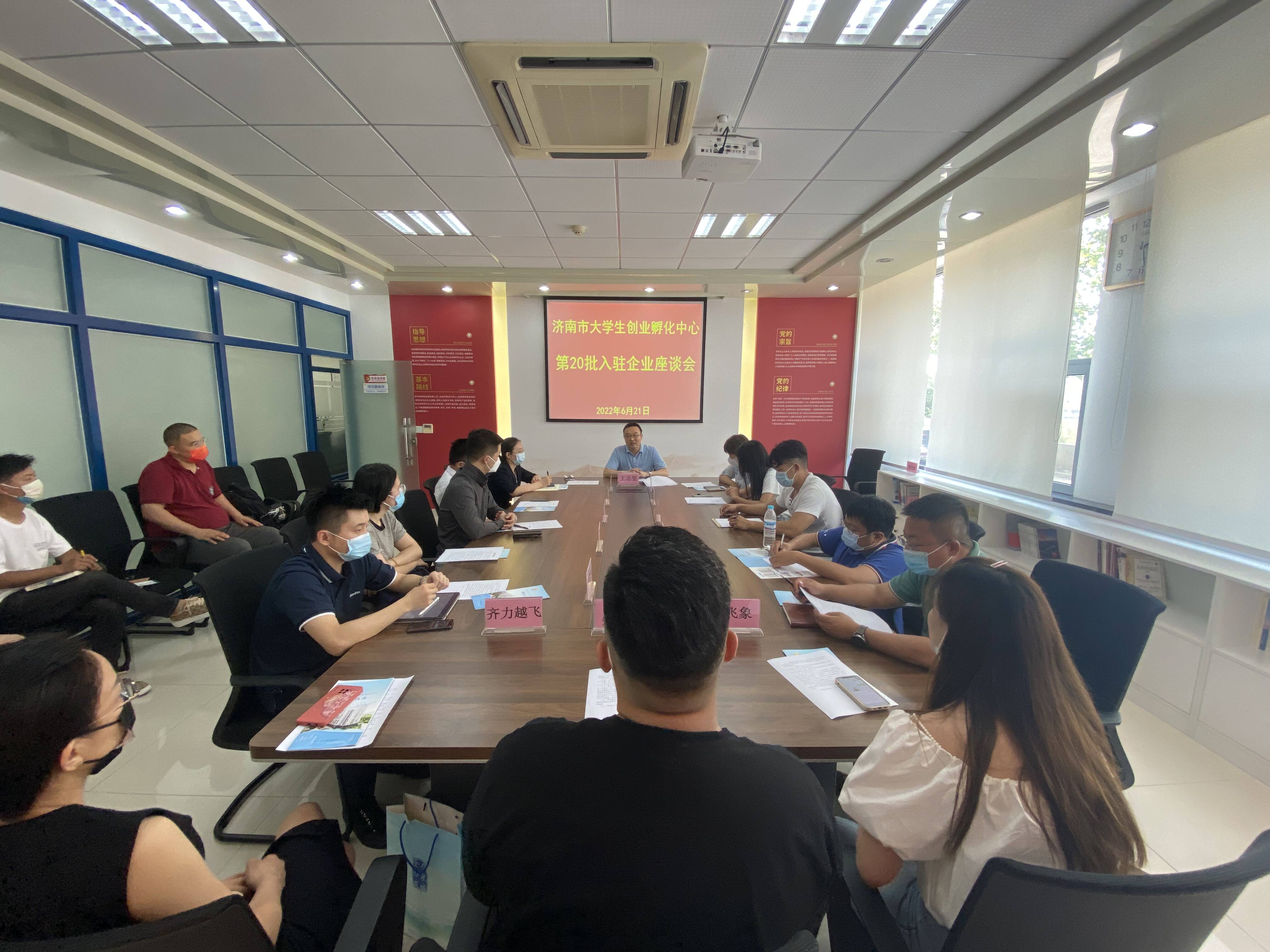
Qilu.com · Lightning News, June 21, June 21, 2022, Jinan University Student Entre...